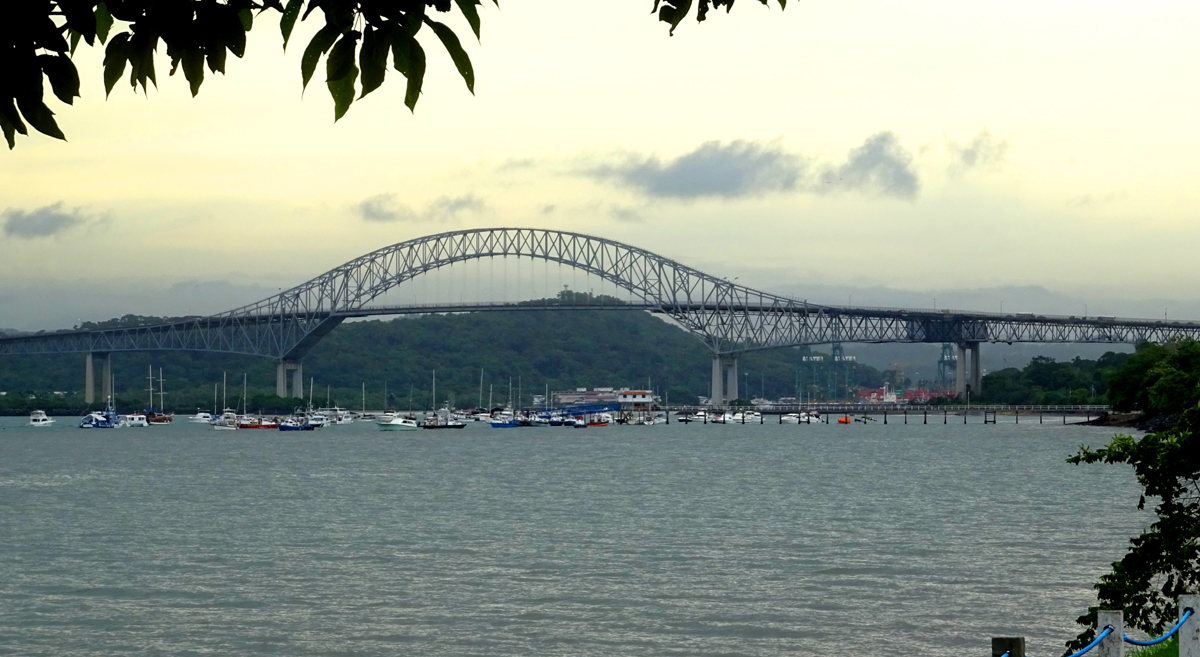Puente del Mundo, Corazon del Universo

Did you know that the national bird of Panama would consider the national bird of the United States to be a light lunch? The harpy eagle, perched high atop Panama’s food chain (some would take the jaguar in a cage fight), is one of the world’s biggest and most powerful raptors. From its hooked ripping beak to the tail-feather tip, the harpy can grow to more than half the height of a tall man, and its wing span can be nearly as wide as a basketball player is tall. Its talons are as big as the claws of grizzly bears. They hunt within the forests and swoop to grab up monkeys and sloths with talons that can exert pressure of 594 pounds per square inch, stronger than an alligator’s jaws.

Since the now-rare harpy feared nothing and refused to flee hunters, there aren’t many left, but the ruler of the skies can still be spotted in Panama’s deep rainforest canopy.

Bird-hunting travelers can find more of them in Panama than most anywhere else on the planet. The Audubon Society of Panama this year added five species newly spotted to the annual checklist; bringing to 1002 the number of bird species that may be seen across the Republic of Panama.

When the sea bottom which is now Panama rose up three million years ago and dammed the ocean between North and South America, that event fundamentally changed life on Earth. Some scientists think the alteration of global currents caused by the creation of Panama caused a change in world climate conducive to the birth of the human species in Africa. For this reason and others many Panamanians don’t consider themselves part of Central America, no matter what the map says. They consider Panama a place apart; as encapsulated in a common phrase that has become an unofficial national motto: “Puente del mundo, corazon del universo.” “Bridge of the world, heart of the universe.”

Because Panama is where the biodiversity exchange between continents began, there remains an enormous variety of creatures that arrived and never left.

Some linguists say Panama is the native Cueva word meaning “a place where many fishes are taken.” Others argue it means “an abundance of butterflies” and some think it means “an abundance of trees.”

In the social studies textbooks used in Panama’s schools, students are taught that the name of their country means “abundance of fish, trees and butterflies,” rolling all three translations into one. More than 15 hundred species of butterflies flit through the forests of Panama, almost 10% of the types of butterflies that exist. There are 950 varieties of orchids.

A world-class museum opened on a Pacific bank of the Panama Canal entrance in 2014 that has become a magnet for visitors as a showcase for biodiversity in Panama and illustrates how the creation of the isthmus changed ecosystems globally. It is called the Biomuseo Panama, and in 2015 it was a finalist nominee as one of the best new museums in the world at the Oscars of museums: the LCD Awards in London.

Renowned architect Frank Gehry presented his design for the Biomuseo as a gift to Panama. His wife is Panamanian. It is his first creation in Latin America and it is Gehry at his most whimsical and most colorful. The building is designed to evoke the image of Panama emerging from the sea uniting the two continents.

The Biomuseo is located on the Amador Causeway projecting miles into the Pacific at the south end of the Panama Canal. The causeway was built from the rocks and dirt dug from the canal.
From the museum one can observe both the skyline of Panama City and the Bridge of the Americas carrying traffic over the Panama Canal.
